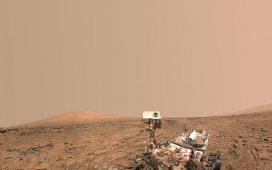
The Moon is about to go dark as it is covered by a lunar eclipse.
As the Earth, Sun and Moon line up to create the rare celestial spectacular, their timing is perfect: it comes exactly 50 years to the day since the beginning of the Apollo 11 mission, when astronauts set off for its surface.
The partial eclipse will be visible across the UK, much of Asia, all of Africa, the eastern part of South America and the western part of Australia.
It will appear in the sky on the evening of 16 July. That happens to be the exact same date that the Apollo 11 mission to the moon blasted off, with the first people ever to touch the lunar surface arriving just a few minutes later.
A lunar eclipse happens when the Earth, Sun and Moon all line up, leaving the Moon hidden from the Sun by the Earth, which sits in between the two. As the Moon moves into the shadow the Earth, it dims dramatically.
1/15
A coronal mass ejection as seen by the Chandra Observatory. This is the first time that Chandra has detected this phenomenon from a star other than the Sun
NASA
2/15
A SpaceX Falcon Heavy rocket launches from NASA’s Kennedy Space Centre in Florida
NASA / Joel Kowsky
3/15
Star clusters Cepheus B (top-right section) and Cepheus C (mid-left) as captured by NASA’s Spitzer Space Telescope
NASA/JPL-Caltech
4/15
An unexpected eruption by the Raikoke Volcano on the Kuril Islands as captured from the International Space Station
NASA
5/15
Jupiter as captured by NASA’s Juno spacecraft
NASA/JPL-Caltech/SwRI/MSSS
6/15
A SpaceX Falcon Heavy rocket is seen shortly after launch
NASA / Joel Kowsky
7/15
The Coma Galaxy Cluster as captured by NASA’s Chandra Observatory, a telescope that captures x-ray emissions in space
NASA/CXC/University of Chicago
8/15
Venus (bottom middle) is seen in the distance as the sun rises over earth as seen from the International Space Station
NASA
9/15
Aurora Australis as seen from the International Space Station
NASA
10/15
A galactic storm rages in the Teacup galaxy
NASA
11/15
The galaxy Messier 59 as seen by the Hubble Telescope
NASA / ESA
12/15
A Russian Soyuz MS-11 space capsule carrying astronauts returning from the International Space Station lands in the steppes of south-east Kazakhstan
NASA / Bill Ingalls
13/15
The galaxy NGC 7773 as captured by the Hubble Telescope
NASA / ESA
14/15
Tumultuous clouds in Jupiter’s northern hemisphere
NASA
15/15
Russia’s Kamchatka Peninsula as seen from space
NASA
1/15
A coronal mass ejection as seen by the Chandra Observatory. This is the first time that Chandra has detected this phenomenon from a star other than the Sun
NASA
2/15
A SpaceX Falcon Heavy rocket launches from NASA’s Kennedy Space Centre in Florida
NASA / Joel Kowsky
3/15
Star clusters Cepheus B (top-right section) and Cepheus C (mid-left) as captured by NASA’s Spitzer Space Telescope
NASA/JPL-Caltech
4/15
An unexpected eruption by the Raikoke Volcano on the Kuril Islands as captured from the International Space Station
NASA
5/15
Jupiter as captured by NASA’s Juno spacecraft
NASA/JPL-Caltech/SwRI/MSSS
6/15
A SpaceX Falcon Heavy rocket is seen shortly after launch
NASA / Joel Kowsky
7/15
The Coma Galaxy Cluster as captured by NASA’s Chandra Observatory, a telescope that captures x-ray emissions in space
NASA/CXC/University of Chicago
8/15
Venus (bottom middle) is seen in the distance as the sun rises over earth as seen from the International Space Station
NASA
9/15
Aurora Australis as seen from the International Space Station
NASA
10/15
A galactic storm rages in the Teacup galaxy
NASA
11/15
The galaxy Messier 59 as seen by the Hubble Telescope
NASA / ESA
12/15
A Russian Soyuz MS-11 space capsule carrying astronauts returning from the International Space Station lands in the steppes of south-east Kazakhstan
NASA / Bill Ingalls
13/15
The galaxy NGC 7773 as captured by the Hubble Telescope
NASA / ESA
14/15
Tumultuous clouds in Jupiter’s northern hemisphere
NASA
15/15
Russia’s Kamchatka Peninsula as seen from space
NASA
What light does fall on it comes from around the Earth’s atmosphere, meaning that it is given a deep red tinge. It is that leads some to call the event a “blood moon”, because of its rich colour.
In the UK, the Moon will rise shortly after it has entered into the darkest part of the Earth’s shadow, meaning that it will already be eclipsed when it becomes visible. It will come up around 9pm in London, and will arrive later the further north and west it is seen from.
The sun does not set until shortly after, so it will rise up into a brighter sky. The eclipse will be visible for hours after, however, giving people the chance to see it as the sun sets and the surface of the Moon changes in appearance.














